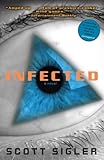As much as I love the zombie apocalypse genre, it has one glaring major flaw: in a world where horror movies, and specifically zombie movies, exist a zombie apocalypse isn’t likely to happen. Â If you were to ask ten random people on the street how to kill a zombie, nine and a half of them will probably know how – aim for the head, destroy the brain, etc. Â This, in fact, is one of the things I tend to hate most about various zombie stories. Â The movie Scream was fantastic because it subverted the genre of horror films by allowing its character to know about horror films when the norm is for people to wander around in the dark by themselves even after discovering that other people have been killed while wandering around in the dark by themselves.
Unwillingness to Kill
The primary crutch that most zombie stories rely on is the reluctance of people to kill other people, especially friends and family members.  I’m fairly certain most of my friends and family are aware that if they become infected, I might keep them around as long as they are useful but once they turn I’m going to put a spike through their brain.  And while I know there are people out there who would be all protective of their recently dead loved ones, I think the education provided by the cautionary tales of zombie films would be enough to make that rare.
Of course, the real obstacle is a well prepared military. Â If the world were to suddenly have pockets of zombies crop up, squads of the National Guard (assuming they aren’t in the Middle East) would be dispatched to deal with the situation. Â At the very least they would round-up and contain the undead while researchers worked on possible solutions. Â In fact, the real threat here is political, as people in Washington jockey for position concerning the rights of Undead Americans and slow down the response and effectiveness of those trained to deal with situations of a violent nature.
Spread of Infection
Depending on the source, another hill for a zombie apocalypse to shamble over is the nature of the infection. Â Traditionally, after the initial turning of corpses or people into flesh-eating monsters, the zombification spreads through bite. Â In most stories, the initial cause is a localized accident, either a chemical spill or natural event. Â From there and moving to a pass-through-bite scenario, suddenly it seems kind of silly that an apocalypse is even possible. Â An event of that sort should take a couple of hours to clean up, maybe a day.
Other stories are more ambitious and use either a specific global event (pass through the tail of a comet) or just go with a generic “the dead started getting up everywhere, all at once, and we don’t know why” nebulous unknown source. Â This, at least, has potential. Â If you get dozens, hundreds or even thousands of locations with zombies simultaneously, you begin to plausibly stress the available response resources. Â You also gain the ability to have pockets of infection go unnoticed and get out of control.
How Would I Do It*
I’ve thought about it a lot.  Obviously, I mean, the title of my blog is “Aim for the Head” and the logo is a zombie.  And as the title of this post says, it has to happen fast.  In my version, the infection that causes the zombies happens in stages.  The first is a virus, the most contagious ever seen.  It’s airborne, it’s in the water, passed by contact and blood.  It is literally everywhere, and it kills 10% of those infected.  Literally a decimation of the world population.  However, those who don’t die appear to be immune to further infection.  That fact, combined with the contagion level of the virus, leads to the decision to stop trying to stop it and instead simply to allow everyone to get infected, killing one out of ten people but leaving the remaining nine immune.
Years later, when people are finally beginning to forget the horror of the Decimation Virus, people start dropping dead. Â It’s just like before, people panic that the Decimation is back, everything goes nuts, and in the confusion, people don’t notice right away that the people who died aren’t staying dead. Â Within hours, approximately one tenth of the world’s population is one of the walking dead, and that percentage is rising.
The point is, it has to be everywhere, all at once, with relatively high-speed in order to outstrip the ability to respond, so that bolting the front door and staying inside is the smartest decision that too many people will not make. Â It has to happen fast.
* If you decide to steal this idea, let me know, perhaps we can collaborate, or maybe we can settle on you just giving me some credit.
 I’m going to start the review of Scott Sigler’s
I’m going to start the review of Scott Sigler’s